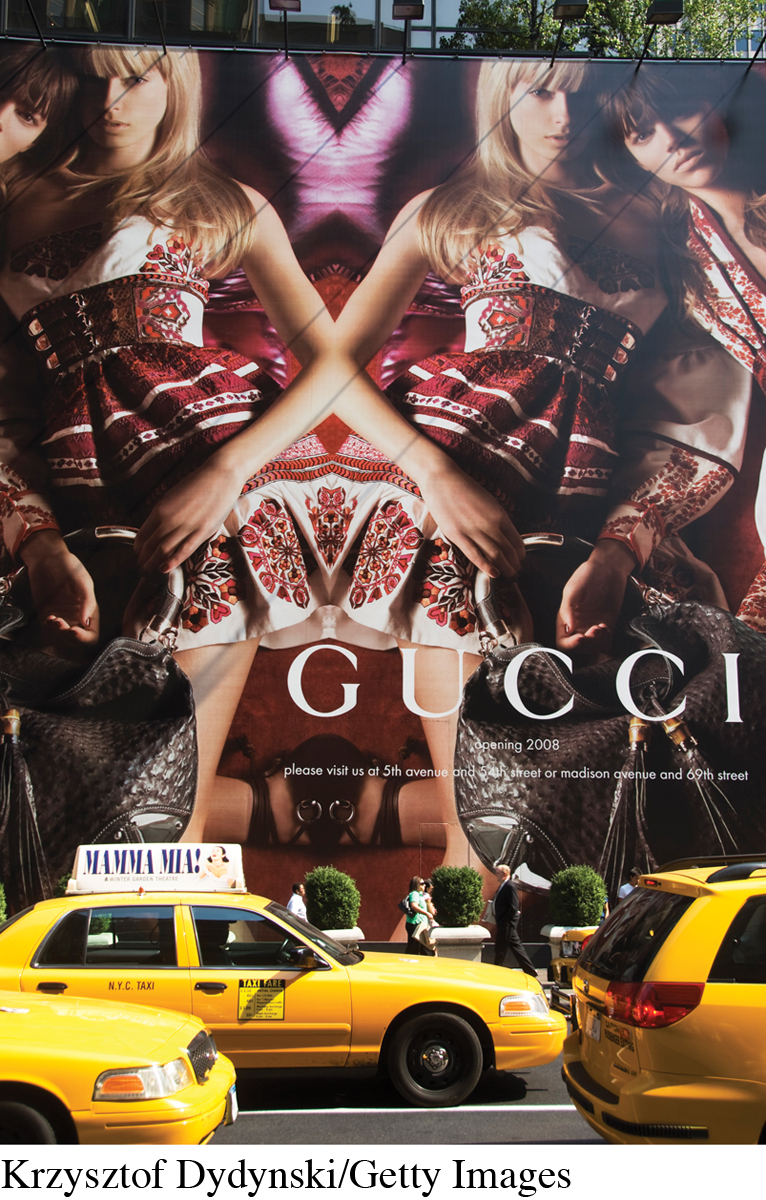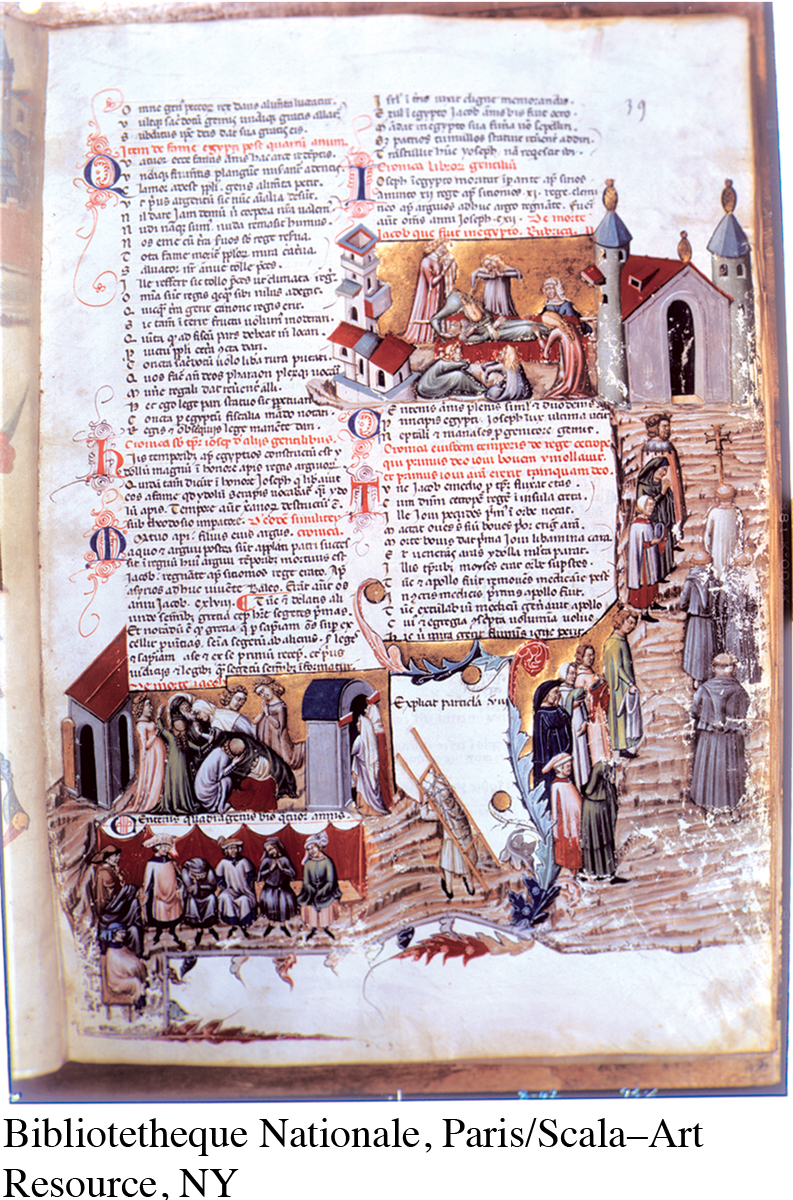Culture and the Evolution of Mass Communication
One way to understand the impact of the media on our lives is to explore the cultural context in which the media operate. Often, culture is narrowly associated with art, the unique forms of creative expression that give pleasure and set standards about what is true, good, and beautiful. Culture, however, can be viewed more broadly as the ways in which people live and represent themselves at particular historical times. This idea of culture encompasses fashion, sports, literature, architecture, education, religion, and science, as well as mass media. Although we can study discrete cultural products, such as novels or songs from various historical periods, culture itself is always changing. It includes a society’s art, beliefs, customs, games, technologies, traditions, and institutions. It also encompasses a society’s modes of communication: the creation and use of symbol systems that convey information and meaning (e.g., languages, Morse code, motion pictures, and one-

CULTURAL VALUES AND IDEALS are transmitted through the media. Many fashion advertisements show beautiful people using a company’s products; such images imply that anyone who buys the products can obtain such ideal beauty. What other societal ideas are portrayed through the media?
Culture is made up of both the products that a society fashions and, perhaps more important, the processes that forge those products and reflect a culture’s diverse values. Thus culture may be defined as the symbols of expression that individuals, groups, and societies use to make sense of daily life and to articulate their values. According to this definition, when we listen to music, read a book, watch television, or scan the Internet, we are usually not asking “Is this art?” but are instead trying to identify or connect with something or someone. In other words, we are assigning meaning to the song, book, TV program, or Web site. Culture, therefore, is a process that delivers the values of a society through products or other meaning-
Culture links individuals to their society by providing both shared and contested values, and the mass media help circulate those values. The mass media are the cultural industries—
These eras, which all still operate to some degree, are oral, written, print, electronic, and digital. The first two eras refer to the communication of tribal or feudal communities and agricultural economies. The last three phases feature the development of mass communication: the process of designing cultural messages and stories and delivering them to large and diverse audiences through media channels as old and distinctive as the printed book and as new and converged as the Internet. Hastened by the growth of industry and modern technology, mass communication accompanied the shift of rural populations to urban settings and the rise of a consumer culture.
Oral and Written Eras in Communication

EARLY BOOKS Before the invention of the printing press, books were copied by hand in a labor-
In most early societies, information and knowledge first circulated slowly through oral traditions passed on by poets, teachers, and tribal storytellers. As alphabets and the written word emerged, however, a manuscript—
Early tensions between oral and written communication played out among ancient Greek philosophers and writers. Socrates (470–399 B.C.E.), for instance, made his arguments through public conversations and debates. Known as the Socratic method, this dialogue style of communication and inquiry is still used in college classrooms and university law schools. Many philosophers who believed in the superiority of the oral tradition feared that the written word would threaten public discussion. In fact, Socrates’ most famous student, Plato (427–347 B.C.E.), sought to banish poets, whom he saw as purveyors of ideas less rigorous than those generated in oral, face-
The Print Revolution
While paper and block printing developed in China around 100 C.E. and 1045, respectively, what we recognize as modern printing did not emerge until the middle of the fifteenth century. At that time in Germany, Johannes Gutenberg’s invention of movable metallic type and the printing press ushered in the modern print era. Printing presses and publications spread rapidly across Europe in the late fifteenth century and early sixteenth century. Early on, the size and expense of books limited them to an audience of wealthy aristocrats, royal families, church leaders, prominent merchants, and powerful politicians. Gradually, printers reduced the size and cost of books, making them available and affordable to more people. Books eventually became the first mass-
First, machine duplication replaced the tedious system in which scribes hand-
Since mass-
Eventually, the machine production of mass quantities that had resulted in a lower cost per unit for books became an essential factor in the mass production of other goods, which led to the Industrial Revolution, modern capitalism, and the consumer culture of the twentieth century. With the revolution in industry came the rise of the middle class and an elite business class of owners and managers who acquired the kind of influence formerly held only by the nobility or the clergy. Print media became key tools that commercial and political leaders used to distribute information and maintain social order.
As with the Internet today, however, it was difficult for a single business or political leader, certainly in a democratic society, to gain exclusive control over printing technology (although the king or queen did control printing press licenses in England until the early nineteenth century, and even today, governments in many countries control presses, access to paper, advertising, and distribution channels). Instead, the mass publication of pamphlets, magazines, and books in the United States helped democratize knowledge, and literacy rates rose among the working and middle classes. Industrialization required a more educated workforce, but printed literature and textbooks also encouraged compulsory education, thus promoting literacy and extending learning beyond the world of wealthy upper-
Just as the printing press fostered nationalism, it also nourished the ideal of individualism. People came to rely less on their local community and their commercial, religious, and political leaders for guidance. By challenging tribal life, the printing press “fostered the modern idea of individuality,” disrupting “the medieval sense of community and integration.”3 In urban and industrial environments, many individuals became cut off from the traditions of rural and small-
The Electronic Era
In Europe and the United States, the impact of industry’s rise was enormous: Factories replaced farms as the main centers of work and production. During the 1880s, roughly 80 percent of Americans lived on farms and in small towns; by the 1920s and 1930s, most had moved to urban areas, where new industries and economic opportunities beckoned. The city had overtaken the country as the focal point of national life.
The gradual transformation from an industrial, print-
The rise of film at the turn of the twentieth century and the development of radio in the 1920s were early signals, but the electronic phase of the Information Age really boomed in the 1950s and 1960s with the arrival of television and its dramatic impact on daily life. Then, with the coming of ever more communication gadgetry—
The Digital Era
In digital communication, images, texts, and sounds are converted (encoded) into electronic signals (represented as varied combinations of binary numbers—
New technologies, particularly cable television and the Internet, developed so quickly that traditional leaders in communication lost some of their control over information. For example, starting with the 1992 presidential campaign, the network news shows (ABC, CBS, and NBC) began to lose their audiences, first to MTV and CNN, and later to MSNBC, Fox News, Comedy Central, and partisan radio talk shows. By the 2012 national elections, Facebook, Twitter, and other social media sites had become key players in news and politics, especially as information resources for younger generations who had grown up in an online and digital world.
Moreover, e-
Oral culture has been further reinvented by the emergence of social media—such as Twitter and, in particular, Facebook, which now has nearly one billion users worldwide. Social media allow people from all over the world to have ongoing online conversations, share stories and interests, and generate their own media content. This turn to digital media forms has fundamentally overturned traditional media business models, the ways we engage with and consume media products, and the ways we organize our daily lives around various media choices.
The Linear Model of Mass Communication
The digital era also brought about a shift in the models that media researchers have used over the years to explain how media messages and meanings are constructed and communicated in everyday life. In one of the older and more enduring explanations of how media operate, mass communication has been conceptualized as a linear process of producing and delivering messages to large audiences. Senders (authors, producers, and organizations) transmit messages (programs, texts, images, sounds, and ads) through a mass media channel (newspapers, books, magazines, radio, television, or the Internet) to large groups of receivers (readers, viewers, and consumers). In the process, gatekeepers (news editors, executive producers, and other media managers) function as message filters. Media gatekeepers make decisions about what messages actually get produced for particular receivers. The process also allows for feedback, in which citizens and consumers, if they choose, return messages to senders or gatekeepers through phone calls, e-
But the problem with the linear model is that in reality, media messages—
A Cultural Model for Understanding Mass Communication
A more contemporary approach to understanding media is through a cultural model. This concept recognizes that individuals bring diverse meanings to messages, given factors and differences such as gender, age, educational level, ethnicity, and occupation. In this model of mass communication, audiences actively affirm, interpret, refashion, or reject the messages and stories that flow through various media channels. For example, when controversial singer Lady Gaga released her nine-
While the linear model may demonstrate how a message gets from a sender to a receiver, the cultural model suggests the complexity of this process and the lack of control that “senders” (such as media executives, moviemakers, writers, news editors, and ad agencies) often have over how audiences receive messages and interpret their intended meanings. Sometimes, producers of media messages seem to be the active creators of communication while audiences are merely passive receptacles. But as the Lady Gaga example illustrates, consumers also shape media messages to fit or support their own values and viewpoints. This phenomenon is known as selective exposure: People typically seek messages and produce meanings that correspond to their own cultural beliefs, values, and interests. For example, studies have shown that people with political leanings toward the left or the right tend to seek out blogs or news outlets that reinforce their preexisting views.
The rise of the Internet and social media has also complicated the traditional roles in both the linear and the cultural models of communication. While there are still senders and receivers, the borderless, decentralized, and democratic nature of the Internet means that anyone can become a sender of media messages—